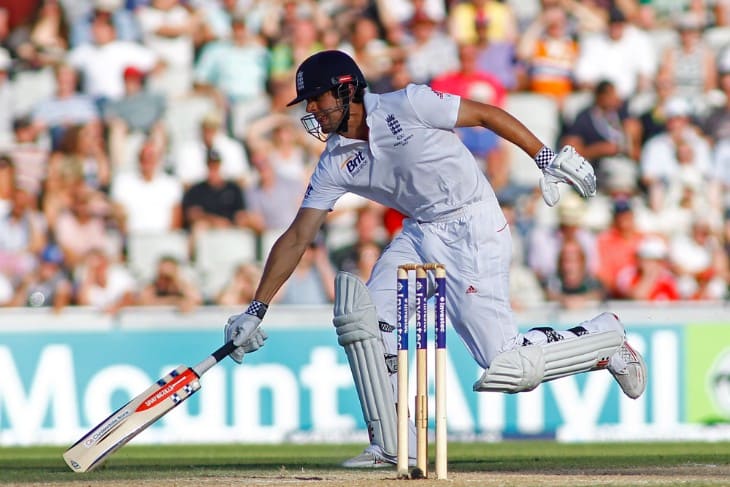- Key Metrics in Assessing a Bowler's Economy Rate
- The Impact of Match Formats on Bowling Economy
- Economic Bowling Strategies in Modern Cricket
- Case Studies: Successful Economical Bowlers
- Role of Field Settings in Enhancing Bowling Economy
- Adapting Bowling Techniques for Economic Outcomes
- Comparing Economy Rates Across International Cricket
- Economy in Cricket: Beyond the Numbers
- Conclusion
Economy in cricket, particularly within the context of bowling, refers to the efficiency with which a bowler limits the number of runs scored by the batting side. This metric is crucial as it often determines the pressure exerted on the batting team and can significantly influence the outcome of a match. The economy rate of a bowler is calculated by dividing the total number of runs conceded by the number of overs they have bowled. For instance, if a bowler concedes 30 runs in 10 overs, their economy rate is 3.0. This figure is a key indicator of a bowler's effectiveness, particularly in limited-overs cricket where run containment is essential.
Understanding the economy in cricket involves more than just numbers. It encompasses the bowler's ability to strategize, adapt to different players and conditions, and maintain consistency. A bowler with a low economy rate is not necessarily one who takes the most wickets but is someone who can exert control over the flow of the game by limiting scoring opportunities. This ability is especially prized in shorter formats, such as Twenty20 cricket, where every run can be crucial.
Key Metrics in Assessing a Bowler's Economy Rate
Evaluating a bowler's economy rate involves several key metrics beyond the basic calculation of runs conceded per over. These metrics provide a deeper insight into a bowler's performance and effectiveness in different match situations.
- Dot Ball Percentage: This metric reflects the number of deliveries bowled in an over that do not result in any runs. A higher dot ball percentage is often indicative of a bowler's ability to build pressure, leading to a more economical rate.
- Boundary Rate: This measures the frequency of boundaries conceded by a bowler. Bowlers with a lower boundary rate are generally more economical, as they limit the scoring opportunities for batsmen.
- Wicket-taking Ability: Although not directly related to economy, the ability to take wickets can significantly affect a bowler's economy rate. A bowler who takes key wickets can shift the momentum of the game, leading to tighter overall run containment.
- Powerplay Performance: Especially in limited-overs formats, a bowler's performance during the powerplay overs (initial overs where fielding restrictions apply) can greatly influence their economy. Effective powerplay bowling is often a hallmark of an economical bowler.
These metrics, when combined, offer a comprehensive picture of a bowler's economic efficiency and their capacity to adapt to different phases of a game.
The Impact of Match Formats on Bowling Economy
Different formats of cricket have distinct impacts on a bowler's economy rate. Each format, with its unique set of rules and playing conditions, demands specific skills and strategies from bowlers.
In Test cricket, the focus is primarily on wicket-taking, with less emphasis on economy. However, an economical spell in Tests can still be crucial, particularly in building pressure and forcing batsmen into making errors. In this format, maintaining a tight line and length over extended periods is key to achieving a favourable economy rate.
Conversely, in One-Day Internationals (ODIs) and Twenty20 (T20) matches, the bowler's economy rate takes on heightened importance due to the limited number of overs. In ODIs, bowlers must balance wicket-taking with run containment, especially during the middle overs. The T20 format, with its aggressive batting style and short duration, places even more emphasis on economy. Bowlers are required to employ various tactics like slower balls, yorkers, and variations in pace and length to keep the batsmen guessing and limit the flow of runs. This adaptability in approach and strategy according to the format is crucial for a bowler to maintain an effective economy rate.

Economic Bowling Strategies in Modern Cricket
In modern cricket, bowlers employ a variety of strategies to enhance their bowler's economy rate. These tactics are not only about skill but also about understanding the psychology of the batsman and the dynamics of the pitch and conditions.
- Variation in Pace: One of the most effective tools in a bowler's arsenal, especially in limited-overs cricket. Varying the speed of deliveries keeps the batsman guessing, making it harder for them to time their shots and find the boundary.
- Accuracy in Line and Length: Consistently hitting the right areas on the pitch is fundamental. This requires rigorous practice and a deep understanding of one's own bowling style and the batsman's weaknesses.
- Utilising the Crease: Changing the point of delivery by utilising the width of the bowling crease can create angles that are difficult for the batsman to negotiate.
- Field Placement Strategy: Working in tandem with the captain to set a field that supports one's bowling plan is critical. Strategic field placements can restrict scoring options for the batsman, forcing them to take risks.
These strategies, when executed well, can significantly improve a bowler's economy rate, making them an asset in any cricket team, especially in formats where run containment is as crucial as taking wickets.
Case Studies: Successful Economical Bowlers
Examining case studies of successful economical bowlers provides valuable insights into how various strategies and skills can be effectively combined to achieve an impressive bowler's economy rate.
One such example is Glenn McGrath, the former Australian fast bowler known for his impeccable line and length. McGrath's ability to consistently bowl in the right areas made scoring runs off him a significant challenge. His success was not just in his skill but in his understanding of each batsman's weaknesses, which he exploited relentlessly.
Another notable example is Anil Kumble, the former Indian leg-spinner. Kumble was not a big turner of the ball, but his accuracy and speed variations, coupled with intelligent field placements, made him one of the most economical and successful bowlers in both Test and ODI cricket.
These bowlers demonstrate that maintaining a low economy rate is not solely about natural talent but also about strategic thinking, continuous adaptation, and an in-depth understanding of the game's nuances. Their careers provide valuable lessons for upcoming bowlers aiming to excel in this aspect of cricket.
Role of Field Settings in Enhancing Bowling Economy
Field settings play a crucial role in improving a bowler's economy rate. A well-thought-out field placement can significantly assist bowlers in their quest to limit runs. The strategy behind field settings depends on various factors, including the bowler's style, the batsman's tendencies, the match situation, and the pitch conditions. For instance, a fast bowler aiming to bowl short and fast might have a field set with more fielders on the leg side to prevent easy scoring opportunities. Similarly, a spinner might have close-in fielders to create pressure and induce a false shot.
In limited-overs cricket, particularly T20s, innovative field placements are often seen. These might include having fielders at unconventional positions like the short fine leg or the deep point to cut off common scoring areas. The synergy between the bowler and the captain is essential here; the bowler needs to trust the field set for them and bowl accordingly. This coordination can lead to a reduction in the scoring rate, thereby improving the bowler's economy rate.
Adapting Bowling Techniques for Economic Outcomes
Adapting bowling techniques is vital for maintaining an effective bowler's economy rate. Bowlers often have to modify their natural style to suit different formats, conditions, and stages of the game.
- Mastering the Yorker: A delivery aimed right at the batsman's feet, the yorker is a potent weapon, especially in the death overs of limited-overs cricket. Its effectiveness lies in making it hard for the batsman to get underneath the ball for big hits.
- Developing Slower Balls: This technique involves deceiving the batsman by delivering the ball with less speed than usual. The variation in pace, when unexpected, can lead to a mistimed shot or a wicket.
- Off-Cutter and Leg-Cutter: These are variations in which the ball moves away from or towards the batsman after pitching. Mastering these can confuse batsmen, leading to reduced scoring opportunities.
- Reading the Pitch and Conditions: Adapting to the pitch and weather conditions is crucial. For instance, on a dry, turning pitch, spinners might bowl a slower, flighted delivery, while seamers might use cutters more effectively.
By adapting these techniques, bowlers can enhance their control over the game, leading to more economical spells and a better overall impact on the match outcome.

Comparing Economy Rates Across International Cricket
Comparing the bowler's economy rate across different international formats and conditions offers intriguing insights. Bowlers in different countries and conditions face unique challenges, affecting their economy rates. For instance, bowlers in the subcontinent, where pitches are generally slower and conducive to spin, often have different economy rates compared to those bowling in countries like Australia or England, where pitches can favour fast bowling.
- Subcontinent Conditions: Spinners generally have a lower economy rate in these conditions due to the assistance they receive from the pitch.
- Pace-Friendly Conditions: In countries like Australia and South Africa, pacers might maintain a lower economy rate as the bounce and seam movement can restrict the batsmen's scoring shots.
- Impact of T20 Leagues: The proliferation of T20 leagues around the world, like the IPL and Big Bash, has led to a global pool of players experiencing different conditions, which helps in adapting their skills and strategies to maintain economical rates in varied situations.
These comparisons highlight the adaptability and versatility required from bowlers to be successful in different formats and conditions while maintaining an effective economy rate.
Economy in Cricket: Beyond the Numbers
While the bowler's economy rate is a key statistic in cricket, its significance extends beyond mere numbers. It reflects a deeper understanding of the game's strategic elements and a bowler's contribution to the team's overall performance.
- Pressure Building: A bowler with a low economy rate can build pressure on the batting side, leading to mistakes or risky shots. This can result in crucial wickets, even if not directly taken by the economical bowler.
- Team Dynamics: Economical bowlers often balance out more aggressive, wicket-taking bowlers in a team, creating a strategic equilibrium. This balance is crucial in formulating successful bowling strategies, especially in limited-overs formats.
- Psychological Edge: Maintaining a tight economy rate can give the bowling side a psychological advantage, creating a sense of control over the game. This can affect the batting side's morale and decision-making.
- Long-Term Impact: Consistently good economy rates can influence the course of a tournament or series. Teams often strategize around bowlers who are known for their economic bowling, which can shape the overall approach to a match or series.
Understanding these aspects helps in appreciating the broader impact of economical bowling, which goes far beyond just restricting runs. It involves contributing to the team's strategy and playing a pivotal role in the outcome of the match or series.
Conclusion
In conclusion, the bowler's economy rate is a vital aspect of cricket, with its importance only set to increase in the future. As cricket evolves, with new formats and more aggressive batting styles, the role of the economical bowler becomes even more critical. Their ability to control the flow of runs can shift the momentum of the game and is often as valuable as the ability to take wickets.


